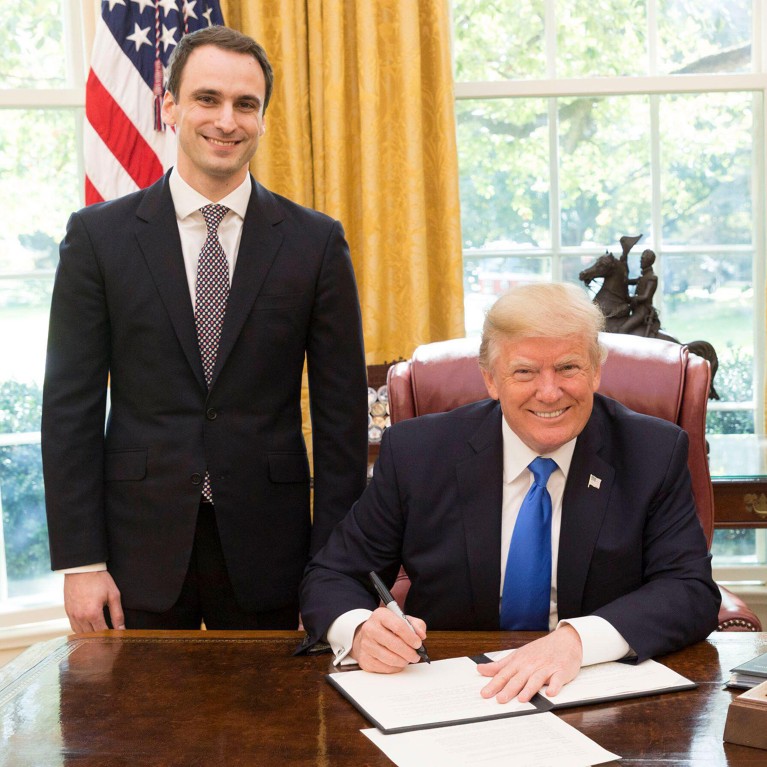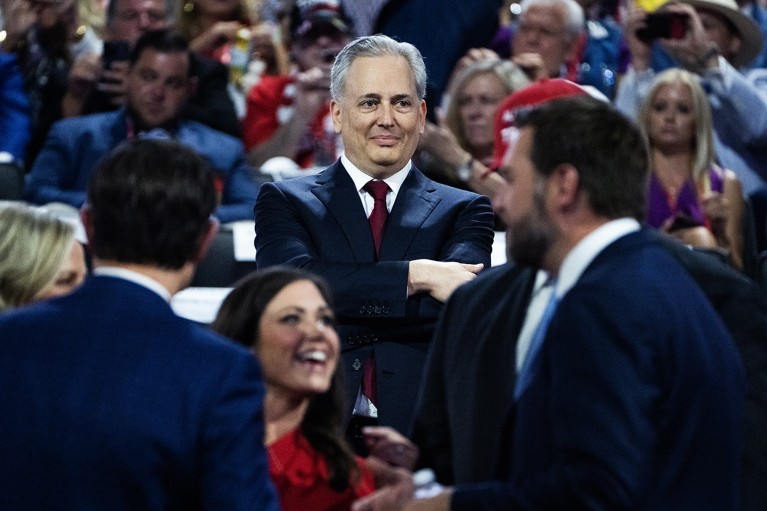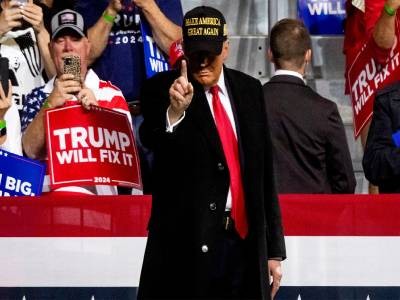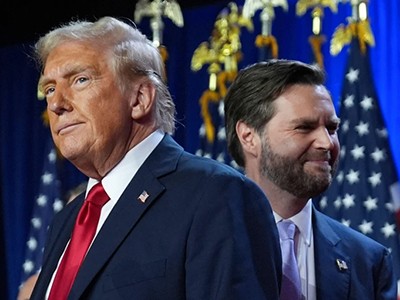
Michael Kratsios (left) was chief technology officer during the first US presidency of Donald Trump (right).Credit: PBH Images/Alamy
For nearly half of Donald Trump’s first U.S. presidency, which ran from 2017 to 2021, he had no official scientific advisor. His second term promises to be different.
While he prepares take office for the second time on January 20Trump has already proposed nominations for three key science adviser positions. Some observers hope this signals greater interest in science and technology, but much uncertainty remains about how advisers will shape American science.
What Trump’s election victory could mean for AI, climate and health
If confirmed by the U.S. Senate, Michael Kratsios, who served as chief technology officer during Trump’s first term, will lead the White House Office of Science and Technology Policy (OSTP), which coordinates science policy within the US government. He will also be the president’s scientific advisor. David Sacks, a technology investor, will be the new administration’s “AI and crypto czar” as well as chairman of the President’s Council of Advisors on Science and Technology (PCAST), a body of research and technology specialists. industry outside the White House. . And roboticist Lynne Parker, who led artificial intelligence (AI) efforts during the first Trump administration, was tapped for a new role with Kratsios and Sacks.
Trump’s focus on AI resulted in the rapid appointment of these advisers, says Kirstin Matthews, a political science researcher at Rice University in Houston, Texas. Advisors did not respond Nature» requests for comments.
In a statement on Trump’s social media platform Truth Socialthe president-elect said his science advisory team would “unleash scientific breakthroughs, ensure America’s technological dominance, and usher in a golden age of American innovation!”
Nature spoke with science policy experts, including a former U.S. science adviser, about the team and what recommendations they might give to Trump.
A powerful influence?
The U.S. president’s scientific advisors can exert powerful influence on policy. An example that researchers often cite is John Holdrenphysicist who served as presidential science advisor and head of OSTP during Barack Obama’s 2009-2017 presidency.
“You can see Holdren’s fingerprints all over White House climate policy over the eight years he was science adviser,” says Kenneth Evans, a science policy researcher at Rice University. Obama also designated Holdren as an “assistant to the president,” which gave Holdren direct access to the president and increased his influence, Matthews says. “A lot of times, scientific advisors are just about being there” when decisions are made, she adds.

David Sacks, expected to become Donald Trump’s AI and crypto czar, at the Republican National Convention in Milwaukee, Wisconsin, last year.Credit: Tom Williams/CQ-Roll Call via Getty
Trump’s first scientific advisor, meteorologist Kelvin Droegemeierwas not appointed until nearly two years into this presidency and did not receive the same designation, thus limiting his influence on policy, experts say.
Many researchers were disappointed by presidential science policy during the first Trump administration. The president at the time made anti-scientific decisions on a range of issues. For example, during the COVID-19 pandemic, Trump downplayed the dangers of the SARS-CoV-2 coronavirus and sidelined government researchers.
This time, Trump designated Kratsios as an “assistant to the president.” Researchers expressed support for the decision. “I think it’s to Trump’s great credit and Kratsios’ great benefit,” Holdren says. Nature.
‘We must be ready for a new world’: Scientists around the world respond to Trump’s election
Although Kratsios lacked science policy experience, he was “a bright spot in the first Trump administration,” Evans says. Tobin Smith, senior vice president for government affairs at the Association of American Universities (AAU) in Washington, DC, says the AAU’s work with Kratsios during this period has been positive, adding, “he is certainly an expert in technology more than a science specialist. , but he understands science.”
The U.S. government’s scientific expertise is spread across many agencies. The OSTP was designed to help coordinate them all and is essentially “there to herd the cats, to break down the silos,” says Evans. That means organizing large scientific projects, such as the BRAIN Initiative, which draws on multiple agencies, as well as industry, to take on the enormous task of mapping the human brain.
Similarly, PCAST, which is typically comprised of representatives from academia and industry, produces reports that guide U.S. science policy on a host of topics, from modernizing firefighting to impact of nanotechnology. During Trump’s first term, PCAST was delayed in starting, reduced in size, and many members were business executives. The researchers say the composition of PCAST will be an indicator of what science policies the second Trump administration will focus on.




